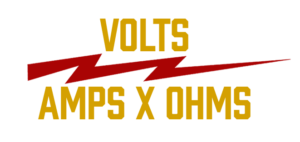Cold Start-Up Misfires – 2003 Chevrolet Tahoe 5.3
This case study will involve a couple different and effective ways that I use to diagnose fuel trim issues. I’m going to use a 2003 Chevrolet Tahoe with a 5.3 liter with just over 60,000 miles on it I did for a used car lot. This Tahoe was setting a P0171, P0174, and a P0300. We all know the P0300 is misfire code which is probably being caused by a lean condition that set the other two codes. The P0171 and P0174 code set criteria is that the long term fuel trim cell must be above 23% for 6 seconds.
Three things came to mind when I saw these codes. A mass airflow sensor problem, plenum to intake gasket leak, or a fuel supply issue. The first thing I did was hook up the Tech 2 to look at the data stream, especially MAF data and fuel trims. At idle the MAF data looked to be in the ballpark at around 4.5 g/s at around 1000 ft. above sea level on a GM 5.3 liter. Now be forewarned that you can have a faulty MAF and still be reading very close to what a good one would be. I saw that it was close to what I would expect so I moved on to the fuel trims. The long term fuel trims at idle were at +10 to +24 showing me that the PCM was adding fuel. This engine usually has -7 ltft at idle. I then revved the engine to 2500 rpm and the fuel trim went down to around +8 – +10. Since the ltft didn’t go down that far, I was thinking it might be a MAF or fuel supply issue. A small vacuum leak usually doesn’t affect ltft at 2500 rpm to much, if at all from my experience.
I forgot my fuel pressure gauge and was really hoping I didn’t have to pull this out of the shop and bring it on a test drive. Since I couldn’t check fuel pressure I pulled the MAF out and checked to see if it was dirty. It wasn’t dirty at all but I sprayed it down anyway. That didn’t affect my fuel trims at all so I decided to smoke the intake just to see since they are known to leak and I could still keep the truck inside. As I filled the intake with smoke I waited to see if any would rise from below the plenum and it eventually did.
Two ports, one on each bank, were smoking a little bit but I was expecting a bigger leak for how high the fuel trims were. Dang it! I wasn’t convinced that the small intake leaks were going to be the whole problem, so I decided to check my fuel supply and MAF sensor another way but I had to go on a test drive. On the test drive I watched my ltft at a steady cruise and they were around 0, this showed me that the intake leak may after all be the only problem. I then did a couple of full throttle runs and my MAF showed over 100 g/s which shows me the MAF is probably good along with the engine load pid hitting 100% which also tells me the MAF is reading correct at full throttle and the engine is breathing well. For more GM engine load pid information visit www.flatrater.com. I then graphed my two front O2 sensor voltage pids. They both pegged over .8v at full throttle which pretty much put the fuel supply issue to rest. I now could confidently say that the plenum gasket leak was the only issue with this Tahoe even though my ltft at 2500 rpm didn’t go down as much as I expected for the two vacuum leaks being as small as they were. Also check this case study for more info.
Leave any questions or comments below. Thank you.
 The Automotive Scan Tool, Scope, and Waveform Training Manual is just over 40 COLOR pages long and is full of images, tests, information, tables, conversions, and common problems. This manual is focused on advanced beginners and intermediate users. Advanced users would also find this manual very handy. The main focus of the manual is on scope usage, interpreting waveforms, and utilizing your graphing scan tool(s).
The Automotive Scan Tool, Scope, and Waveform Training Manual is just over 40 COLOR pages long and is full of images, tests, information, tables, conversions, and common problems. This manual is focused on advanced beginners and intermediate users. Advanced users would also find this manual very handy. The main focus of the manual is on scope usage, interpreting waveforms, and utilizing your graphing scan tool(s).
Great guide for Snap-On Modis, Versus, and Vantage Pro users but the manual is designed for all automotive scopes in mind. This great resource includes useful charts and tables, scope waveforms, graphing scan tool testing tips and tricks, along with scope test lead and low amp probe test hook up location diagrams. Sensor tests include O2, TPS, VSS, MAF, CKP, CMP and MAP. Other component testing includes fuel pumps, coils, starters, blower motors, and fuel injectors. Ford Mode 6 misfire diagnostics and Ford coil on plug (COP) testing tricks included. Tricks include two test lead hook-ups to diagnose how many coils and which cylinder coils are bad, even before the customer knows! Download Now – $15







Brian Quinty
Which model of motorvac evap leak chek is that in the picture…….I have one and need service parts and don’t see a model number written anywhere on mine. Any and all help is greatly appreciated!